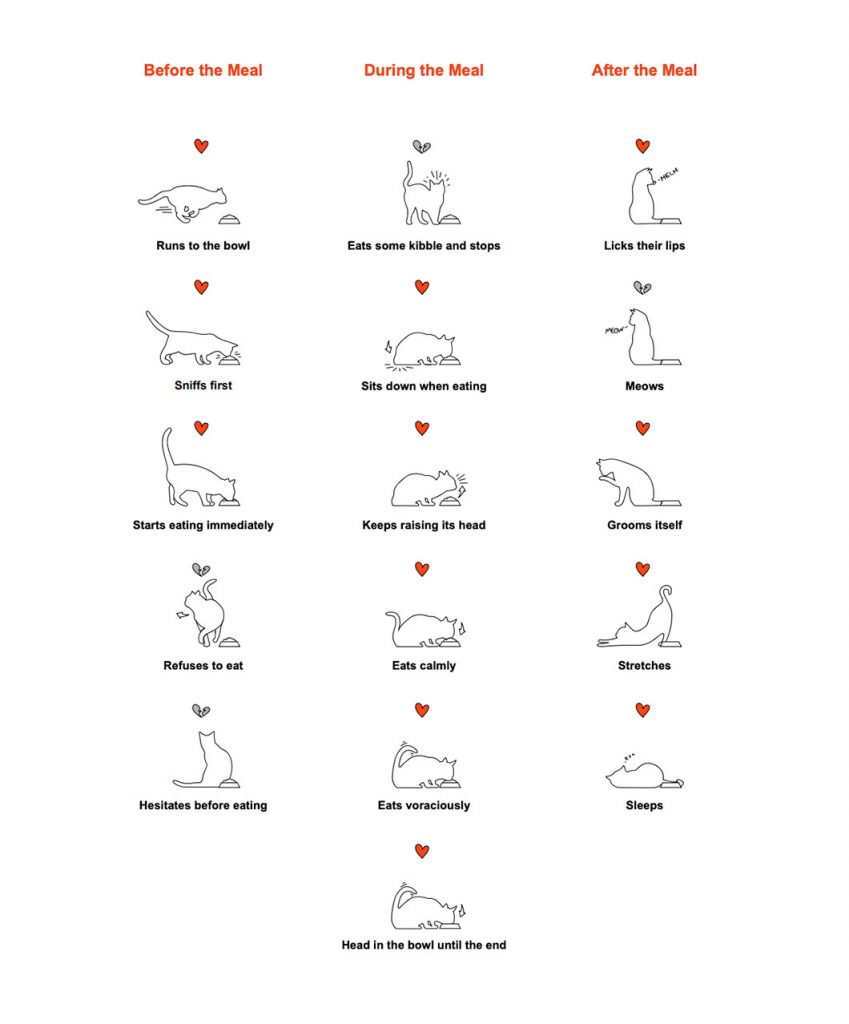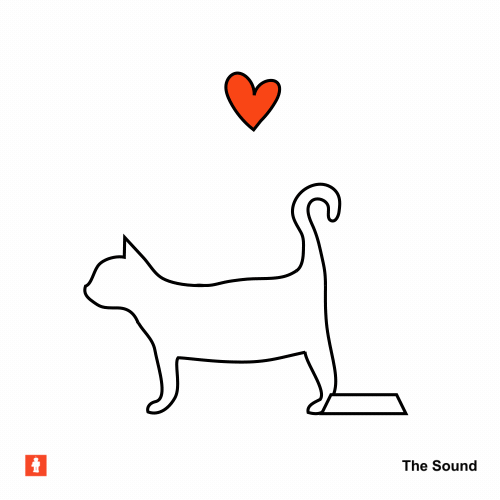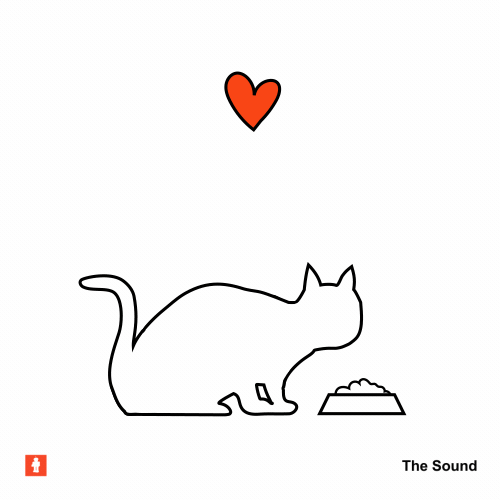Taken from our study on the Cat Food Decision Making Journey
Owners judge a foods success not just on whether the cat eats it but whether they visibly enjoy it. They want to see clear signs that their cats are appreciating the food, much like themselves when they eat a good meal.
A cat’s body language and their behaviour at the bowl can strongly influence their owner’s perception of whether their choice is a good one. French pet food company Panelis studied at bowl behaviours to understand how people perceived their pet’s reaction to a food.

The study found 16 consistent behaviours across the entire feeding ritual (before, during and after eating) and each was assigned a positive or negative value, indicating whether the cat was enjoying the food and whether the choice was a success or not.
These interpreted behaviours were analysed alongside data captured on the amount of food consumed and the consistency of consumption. What they found was that most owners are exceptionally good at interpreting their pet’s behaviour and extrapolating it to determine whether they had made a good choice (success) or a bad one (failure).
When the cat likes and consistently eats the food.
At the Moment of Use, if a cat immediately starts eating and continues to eat the food, whilst displaying behaviours consistent with enjoyment, most people breathe a giant sigh of relief.
Having gone through the emotional and mentally taxing journey (sometimes more than once) of trying to find a food that their cat will both eat and appreciate, witnessing evidence of its success is a significant moment for any owner.
They’re filled with feelings of relief, joy and an inner voice declaring victory. They feel validated in their choice and, in many cases, have positive feelings towards the brand that has made this moment possible.
If the journey has been a particularly difficult one, or one that has had to be repeated a number of times, there can also be a sense of ‘brand gratitude’ that can help form the foundation of lifelong affinity and advocacy.
Given the fickle nature of cats appetites and food preferences, and the number of potential diet-related or diet sensitive health issues, the chances of an owner having to repeat the decision making process in the future are significant. If a brand can establish itself (both mentally and emotionally) as the go-to brand in those instances, forming a strong bond with the cat owner; whilst the choice of product may change, there is a strong likelihood they will still stay in-brand.

Most cat owners experiencing a positive and consistent Moment of Use with a new food will become loyalists simply by virtue of having found a solution that works. Knowing the chance of failure is reasonably high, sticking with a food that works can create a default Loyalty Loop, irrespective of how much affinity they feel for the brand.
It’s why it’s incredibly important for brands to understand which of the two types of Loyalty Loops owners are likely to move into (passive and active) and focus retention and engagement strategies on converting the former and supporting the latter.
Cat owners who become Passive Loyalists are mostly driven by convenience; they’re happy they’ve found a food the cat likes and want to maintain the status quo. As a result they enter into a Loyalty Loop (habitual purchasing pattern) driven mostly by a desire to avoid engaging in any further decision making, rather than out of any commitment to a brand. Passive Loyalists are open to switching if given enough reason or incentive. Passive Loyalty is simply the loyalty of convenience.
Cat owners who become Active Loyalists are mostly driven by love of the brand; not only are they happy they’ve found a food the cat likes but they also feel a strong emotional attachment to the brand. They enter into a Loyalty Loop of their own, but it’s one driven by a commitment to, and alignment with the brand. Some owners feel strongly that the brand has supported them in their moment of need, and in some cases when the situational context is extremely emotionally charged(e.g. if their cat hasn’t eaten for days) can feel the brand has ‘saved’ them.
Cat owners who are Active Loyalists enjoy engaging with the brand, become advocates for it and over time can form a deep bond with it. It’s why when they look for a potential second food or treat, or when a new trigger moment occurs, they will look within the brand portfolio and resist the draw of the competition. Active Loyalty is the loyalty of belief.



